-
 Bitcoin
Bitcoin $105,113.3912
0.12% -
 Ethereum
Ethereum $2,520.6048
-0.46% -
 Tether USDt
Tether USDt $1.0003
-0.01% -
 XRP
XRP $2.1608
-0.42% -
 BNB
BNB $649.3011
-0.11% -
 Solana
Solana $146.8412
0.91% -
 USDC
USDC $1.0000
0.00% -
 Dogecoin
Dogecoin $0.1743
-1.62% -
 TRON
TRON $0.2725
1.04% -
 Cardano
Cardano $0.6273
-1.01% -
 Hyperliquid
Hyperliquid $40.2681
-1.43% -
 Sui
Sui $2.9603
-1.38% -
 Bitcoin Cash
Bitcoin Cash $443.6439
1.95% -
 Chainlink
Chainlink $13.0988
-0.14% -
 UNUS SED LEO
UNUS SED LEO $9.2161
1.61% -
 Stellar
Stellar $0.2571
-0.70% -
 Avalanche
Avalanche $18.9812
-0.36% -
 Toncoin
Toncoin $2.9584
-1.37% -
 Shiba Inu
Shiba Inu $0.0...01194
-1.68% -
 Litecoin
Litecoin $85.5083
-0.49% -
 Hedera
Hedera $0.1528
-3.98% -
 Polkadot
Polkadot $3.7835
-0.32% -
 Ethena USDe
Ethena USDe $1.0001
-0.04% -
 Monero
Monero $318.3484
1.90% -
 Dai
Dai $1.0000
0.00% -
 Bitget Token
Bitget Token $4.5129
-0.71% -
 Pepe
Pepe $0.0...01115
0.72% -
 Uniswap
Uniswap $7.1870
-1.31% -
 Pi
Pi $0.6066
2.70% -
 Aave
Aave $276.6237
0.39%
Which is better, EMA or volume-weighted moving average? Is the combination of volume and price more reliable?
EMA reacts quickly to price changes, while VWMA incorporates volume for more reliable signals in crypto trading, enhancing trend confirmation and noise reduction.
Jun 13, 2025 at 10:07 pm
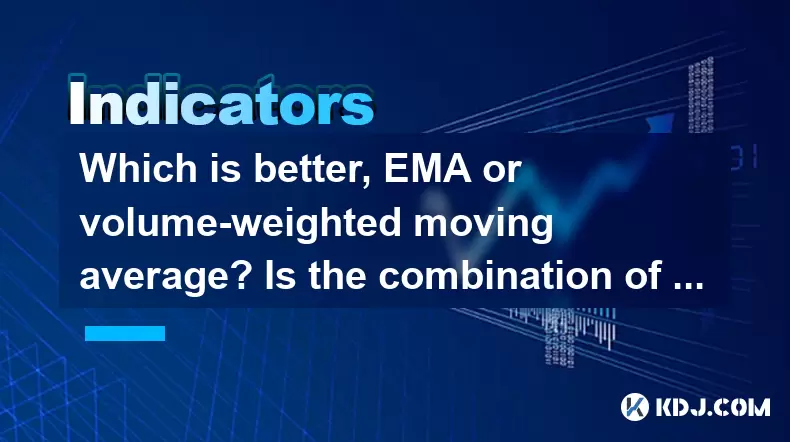
In the realm of cryptocurrency trading, technical indicators play a crucial role in helping traders make informed decisions. Among the many indicators available, the Exponential Moving Average (EMA) and the Volume-Weighted Moving Average (VWMA) are frequently used by traders to gauge market trends and potential price movements. This article aims to compare these two indicators and explore whether combining volume and price data can lead to more reliable trading signals.
Understanding Exponential Moving Average (EMA)
The Exponential Moving Average (EMA) is a type of moving average that places a greater weight and significance on the most recent data points. Unlike the Simple Moving Average (SMA), which assigns equal weight to all values, the EMA responds more quickly to recent price changes, making it a preferred choice for traders who want to react swiftly to market movements.
The formula for calculating the EMA is as follows:
[ \text{EMA}{\text{today}} = (\text{Price}{\text{today}} \times \text{Multiplier}) + (\text{EMA}_{\text{yesterday}} \times (1 - \text{Multiplier})) ]
Where the Multiplier is calculated as:
[ \text{Multiplier} = \frac{2}{\text{Period} + 1} ]
The EMA's sensitivity to recent price changes can be both an advantage and a disadvantage. While it allows traders to catch trends early, it can also lead to false signals during periods of high volatility.
Understanding Volume-Weighted Moving Average (VWMA)
The Volume-Weighted Moving Average (VWMA) is a moving average that incorporates volume data into its calculations. This indicator gives more weight to price levels with higher trading volumes, under the assumption that these levels are more significant and indicative of true market sentiment.
The formula for calculating the VWMA is:
[ \text{VWMA} = \frac{\sum (\text{Price} \times \text{Volume})}{\sum \text{Volume}} ]
The VWMA is particularly useful in markets where volume can significantly impact price movements, such as in cryptocurrencies where large trades can sway the market direction. By considering both price and volume, the VWMA can provide a more comprehensive view of market trends.
Comparing EMA and VWMA
When comparing the EMA and VWMA, several factors come into play, including responsiveness to price changes, consideration of volume, and overall reliability.
Responsiveness: The EMA is more responsive to recent price changes, making it suitable for short-term trading strategies. On the other hand, the VWMA, while still responsive, tends to be less so due to its consideration of volume, which can smooth out the impact of sudden price spikes.
Volume Consideration: The VWMA's inclusion of volume data is its most significant advantage over the EMA. In the cryptocurrency market, where volume can be a key indicator of market strength, the VWMA can provide more reliable signals by accounting for the intensity of trading activity.
Reliability: The reliability of an indicator can vary depending on the trading strategy and market conditions. The EMA's quick response to price changes can be beneficial in trending markets but can lead to false signals in choppy markets. Conversely, the VWMA's incorporation of volume can help filter out noise and provide more stable signals, but it may lag behind in fast-moving markets.
Combining Volume and Price: Is It More Reliable?
The question of whether combining volume and price data leads to more reliable trading signals is a crucial one for traders. In the context of the cryptocurrency market, where volume can significantly influence price movements, the answer leans towards yes.
Enhanced Signal Accuracy: By considering both price and volume, indicators like the VWMA can provide more accurate signals. High volume at certain price levels can confirm the strength of a trend, making the signals more reliable.
Noise Reduction: Volume data can help filter out market noise and false signals. For instance, a price movement accompanied by low volume may not be as significant as one with high volume, allowing traders to focus on more meaningful price movements.
Confirmation of Trends: Combining volume and price can also help in confirming trends. A rising price trend with increasing volume can be a strong indication of a continuing bullish trend, while a declining price trend with decreasing volume might suggest a weakening bearish trend.
Practical Application: Using EMA and VWMA in Trading
To understand how to use the EMA and VWMA in trading, let's look at a practical example. Suppose you are trading Bitcoin and want to use these indicators to make trading decisions.
Setting Up Indicators:
- EMA: Choose a short-term EMA (e.g., 9-day) and a long-term EMA (e.g., 21-day) to identify potential crossovers that signal buy or sell opportunities.
- VWMA: Use a VWMA with a similar period (e.g., 21-day) to complement the EMA and provide a volume-weighted perspective on the price trend.
Trading Strategy:
- EMA Crossover: A bullish signal occurs when the short-term EMA crosses above the long-term EMA, suggesting a potential uptrend. Conversely, a bearish signal occurs when the short-term EMA crosses below the long-term EMA, indicating a potential downtrend.
- VWMA Confirmation: Use the VWMA to confirm the signals provided by the EMA. If the price is above the VWMA during an EMA bullish crossover, it adds confidence to the buy signal. Similarly, if the price is below the VWMA during an EMA bearish crossover, it strengthens the sell signal.
Monitoring and Adjusting:
- Continuously monitor the indicators and adjust your strategy based on market conditions. In volatile markets, you may need to shorten the periods of your EMAs and VWMAs to react more quickly to price changes. In more stable markets, longer periods can help filter out noise and provide more reliable signals.
Limitations and Considerations
While both the EMA and VWMA can be powerful tools in a trader's arsenal, it's essential to be aware of their limitations and consider other factors when making trading decisions.
False Signals: Both indicators can generate false signals, especially during periods of high volatility or low liquidity. Always use additional indicators and analysis to confirm signals.
Lag: The VWMA, due to its inclusion of volume data, can sometimes lag behind price movements. This lag can be a disadvantage in fast-moving markets where quick reactions are necessary.
Market Context: The effectiveness of these indicators can vary depending on the market context. For instance, in a market dominated by large institutional trades, the VWMA might be more effective, while in a market driven by retail traders, the EMA might provide more timely signals.
Combining with Other Indicators: To increase the reliability of your trading signals, consider combining the EMA and VWMA with other technical indicators such as the Relative Strength Index (RSI), Moving Average Convergence Divergence (MACD), or Bollinger Bands. This multi-indicator approach can help you make more informed trading decisions.
Frequently Asked Questions
Q: Can the EMA and VWMA be used for long-term investing in cryptocurrencies?
A: While the EMA and VWMA are typically used for shorter-term trading, they can also be adapted for long-term investing. For long-term strategies, use longer periods for both indicators (e.g., 50-day or 200-day) to smooth out short-term fluctuations and focus on broader market trends. The key is to align the periods of the indicators with your investment horizon and risk tolerance.
Q: How do I choose the right period for the EMA and VWMA in cryptocurrency trading?
A: The choice of period depends on your trading strategy and time frame. For short-term trading, shorter periods (e.g., 9-day or 21-day) can provide more responsive signals. For medium-term trading, consider periods like 50-day, and for long-term investing, use periods like 200-day. Experiment with different periods and backtest your strategy to find what works best for your specific trading style.
Q: Are there specific cryptocurrencies where the VWMA performs better than the EMA?
A: The performance of the VWMA versus the EMA can vary depending on the liquidity and trading volume of the cryptocurrency. In highly liquid cryptocurrencies like Bitcoin and Ethereum, where large trades can significantly impact the market, the VWMA may perform better due to its consideration of volume. In less liquid cryptocurrencies, the EMA might provide more timely signals due to its sensitivity to price changes.
Q: Can the VWMA be used to predict volume spikes in the cryptocurrency market?
A: While the VWMA itself does not predict volume spikes, it can help traders identify periods of high trading volume that may precede significant price movements. By monitoring the VWMA and comparing it to the price action, traders can gain insights into the market's volume dynamics and adjust their trading strategies accordingly.
Disclaimer:info@kdj.com
The information provided is not trading advice. kdj.com does not assume any responsibility for any investments made based on the information provided in this article. Cryptocurrencies are highly volatile and it is highly recommended that you invest with caution after thorough research!
If you believe that the content used on this website infringes your copyright, please contact us immediately (info@kdj.com) and we will delete it promptly.
- Bitcoin Charges Toward 100K
- 2025-06-15 20:35:12
- DeXe [DEXE] has been strained in recent weeks.
- 2025-06-15 20:35:12
- Monero (XMR) Surges 50% to $317 as This New Meme Coin Promises Even Bigger Gains
- 2025-06-15 20:30:12
- Bitcoin Needs to Hit $171,000 for Realized Price Model to Match Previous Cycle Peaks
- 2025-06-15 20:30:12
- US SEC Ends Investigation into PayPal's PYUSD Stablecoin
- 2025-06-15 20:25:14
- Ethereum Dips Below $1800 as Market Hesitation Sets In
- 2025-06-15 20:25:14
Related knowledge
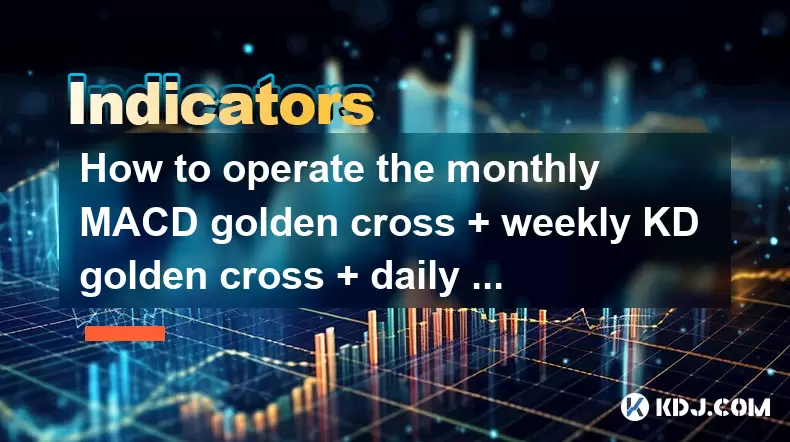
How to operate the monthly MACD golden cross + weekly KD golden cross + daily volume breakthrough?
Jun 15,2025 at 05:36am
Understanding the Strategy: Monthly MACD Golden CrossTo effectively operate the monthly MACD golden cross, traders must first understand what this signal entails. The MACD (Moving Average Convergence Divergence) golden cross occurs when the MACD line crosses above the signal line on a given chart timeframe. When this happens on the monthly chart, it sug...
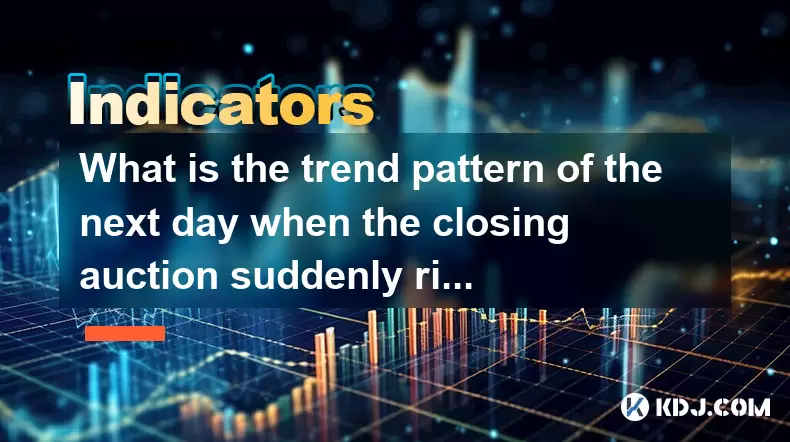
What is the trend pattern of the next day when the closing auction suddenly rises?
Jun 15,2025 at 08:15am
Understanding Closing Auctions in Cryptocurrency MarketsIn the context of cryptocurrency trading, a closing auction refers to a mechanism used by exchanges to determine the closing price of an asset at the end of a trading session. This process typically occurs within a short time window before the market closes for the day and aims to provide a fair an...

What does it mean when the volume fluctuates during the sideways trading at high levels?
Jun 15,2025 at 10:28am
Understanding Volume Fluctuations in Sideways TradingWhen volume fluctuates during sideways trading at high levels, it refers to the changes in the number of assets traded over a given period while the price remains relatively stable, moving within a defined range. This phenomenon typically occurs when the market lacks a clear directional bias—neither b...
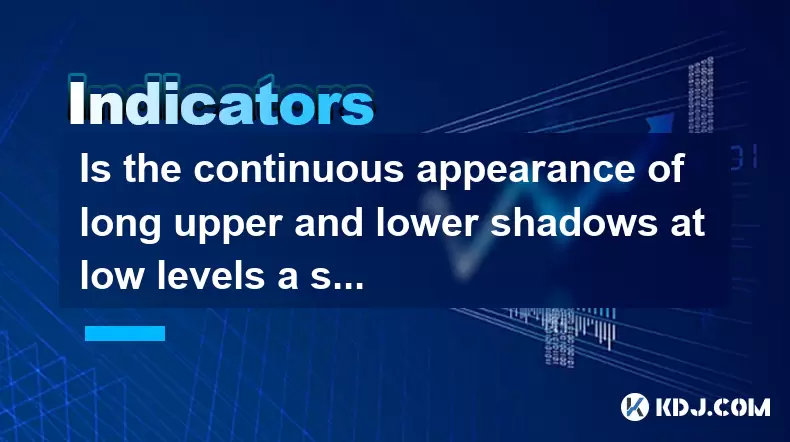
Is the continuous appearance of long upper and lower shadows at low levels a signal of accumulation?
Jun 15,2025 at 01:43am
Understanding Long Upper and Lower Shadows in Candlestick ChartsIn the world of cryptocurrency trading, candlestick patterns are widely used to analyze price movements. A long upper shadow, also known as a wick or tail, indicates that the price rose significantly during the period but was pushed back down by selling pressure. Conversely, a long lower sh...
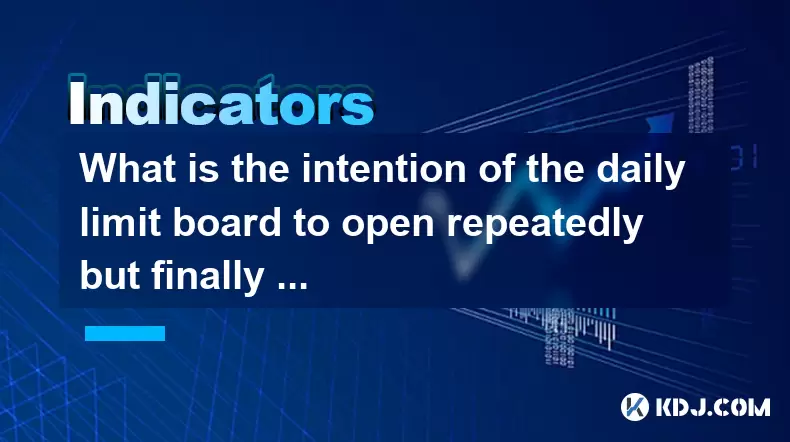
What is the intention of the daily limit board to open repeatedly but finally close?
Jun 15,2025 at 01:08am
Understanding the Daily Limit Board in Cryptocurrency TradingIn cryptocurrency trading, a daily limit board refers to a price movement restriction mechanism applied by certain exchanges or regulatory bodies. This mechanism is primarily used to prevent extreme volatility and panic selling or buying during periods of intense market fluctuation. When an as...

How to calculate the probability of trend continuation after the MACD column divergence?
Jun 14,2025 at 08:01am
Understanding MACD Column DivergenceThe Moving Average Convergence Divergence (MACD) is a widely used technical indicator in cryptocurrency trading. The MACD column, also known as the histogram, represents the difference between the MACD line and the signal line. When price makes a new high or low but the MACD histogram does not confirm this movement, a...

How to operate the monthly MACD golden cross + weekly KD golden cross + daily volume breakthrough?
Jun 15,2025 at 05:36am
Understanding the Strategy: Monthly MACD Golden CrossTo effectively operate the monthly MACD golden cross, traders must first understand what this signal entails. The MACD (Moving Average Convergence Divergence) golden cross occurs when the MACD line crosses above the signal line on a given chart timeframe. When this happens on the monthly chart, it sug...

What is the trend pattern of the next day when the closing auction suddenly rises?
Jun 15,2025 at 08:15am
Understanding Closing Auctions in Cryptocurrency MarketsIn the context of cryptocurrency trading, a closing auction refers to a mechanism used by exchanges to determine the closing price of an asset at the end of a trading session. This process typically occurs within a short time window before the market closes for the day and aims to provide a fair an...

What does it mean when the volume fluctuates during the sideways trading at high levels?
Jun 15,2025 at 10:28am
Understanding Volume Fluctuations in Sideways TradingWhen volume fluctuates during sideways trading at high levels, it refers to the changes in the number of assets traded over a given period while the price remains relatively stable, moving within a defined range. This phenomenon typically occurs when the market lacks a clear directional bias—neither b...

Is the continuous appearance of long upper and lower shadows at low levels a signal of accumulation?
Jun 15,2025 at 01:43am
Understanding Long Upper and Lower Shadows in Candlestick ChartsIn the world of cryptocurrency trading, candlestick patterns are widely used to analyze price movements. A long upper shadow, also known as a wick or tail, indicates that the price rose significantly during the period but was pushed back down by selling pressure. Conversely, a long lower sh...

What is the intention of the daily limit board to open repeatedly but finally close?
Jun 15,2025 at 01:08am
Understanding the Daily Limit Board in Cryptocurrency TradingIn cryptocurrency trading, a daily limit board refers to a price movement restriction mechanism applied by certain exchanges or regulatory bodies. This mechanism is primarily used to prevent extreme volatility and panic selling or buying during periods of intense market fluctuation. When an as...

How to calculate the probability of trend continuation after the MACD column divergence?
Jun 14,2025 at 08:01am
Understanding MACD Column DivergenceThe Moving Average Convergence Divergence (MACD) is a widely used technical indicator in cryptocurrency trading. The MACD column, also known as the histogram, represents the difference between the MACD line and the signal line. When price makes a new high or low but the MACD histogram does not confirm this movement, a...
See all articles

























































































